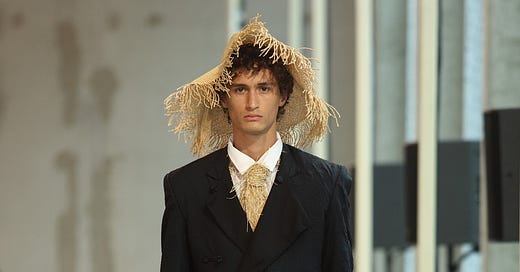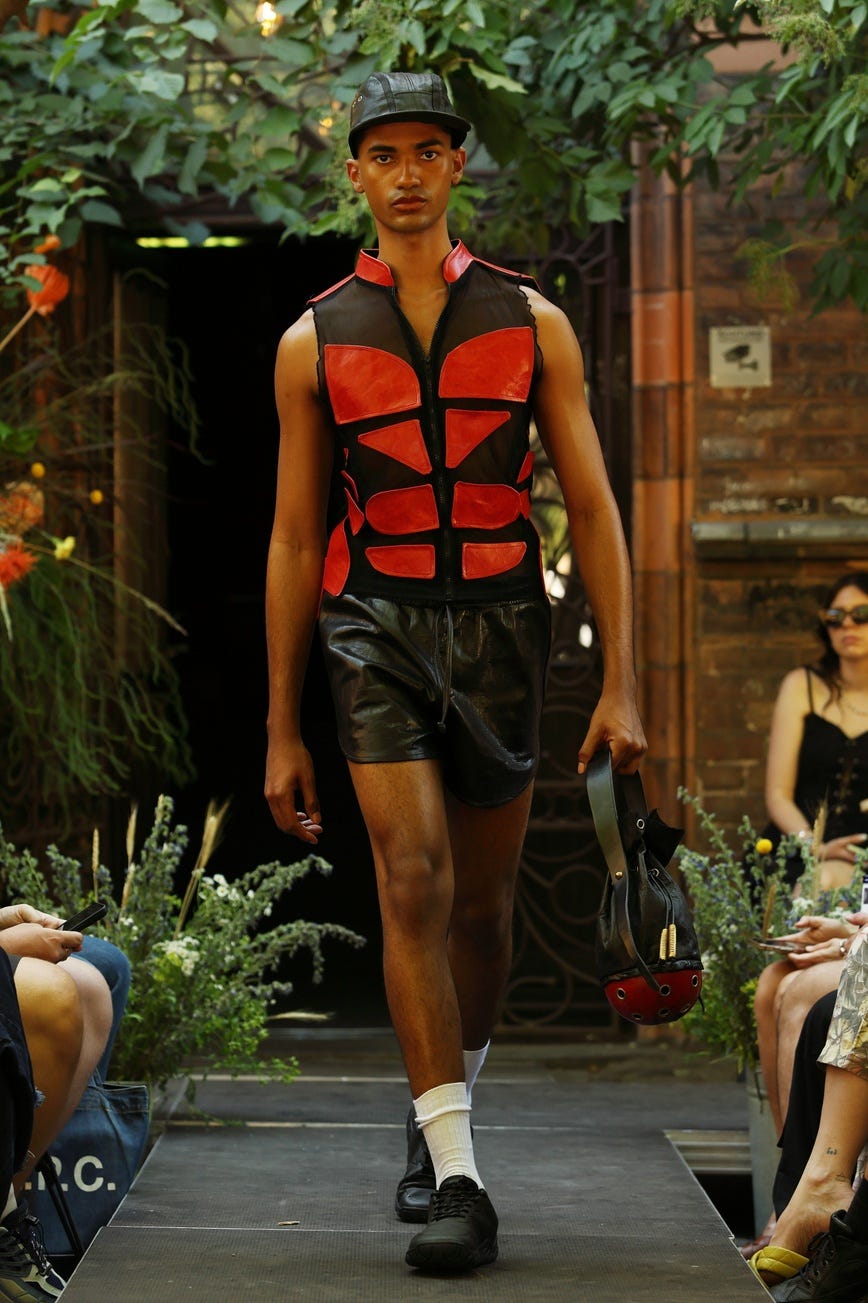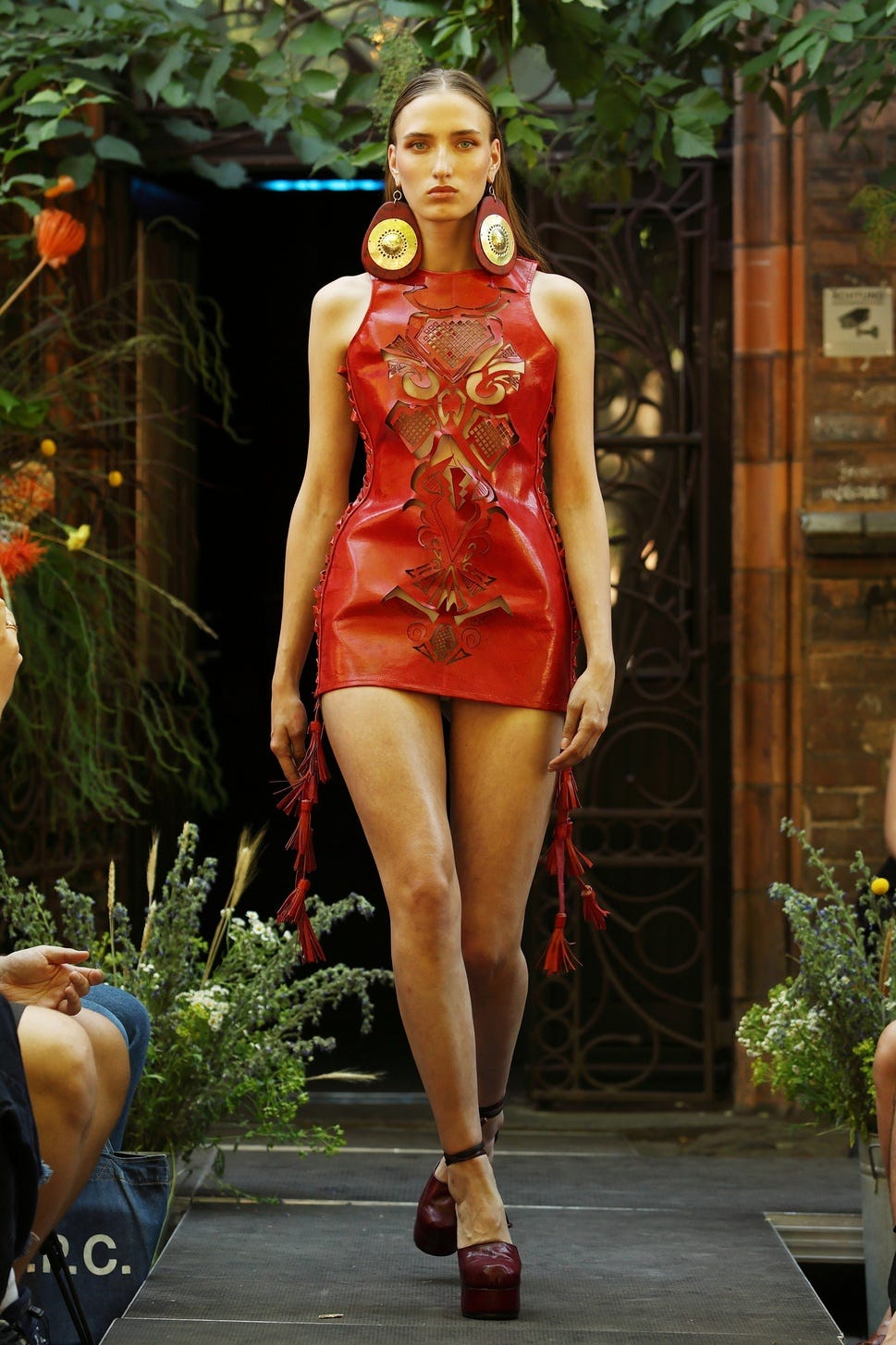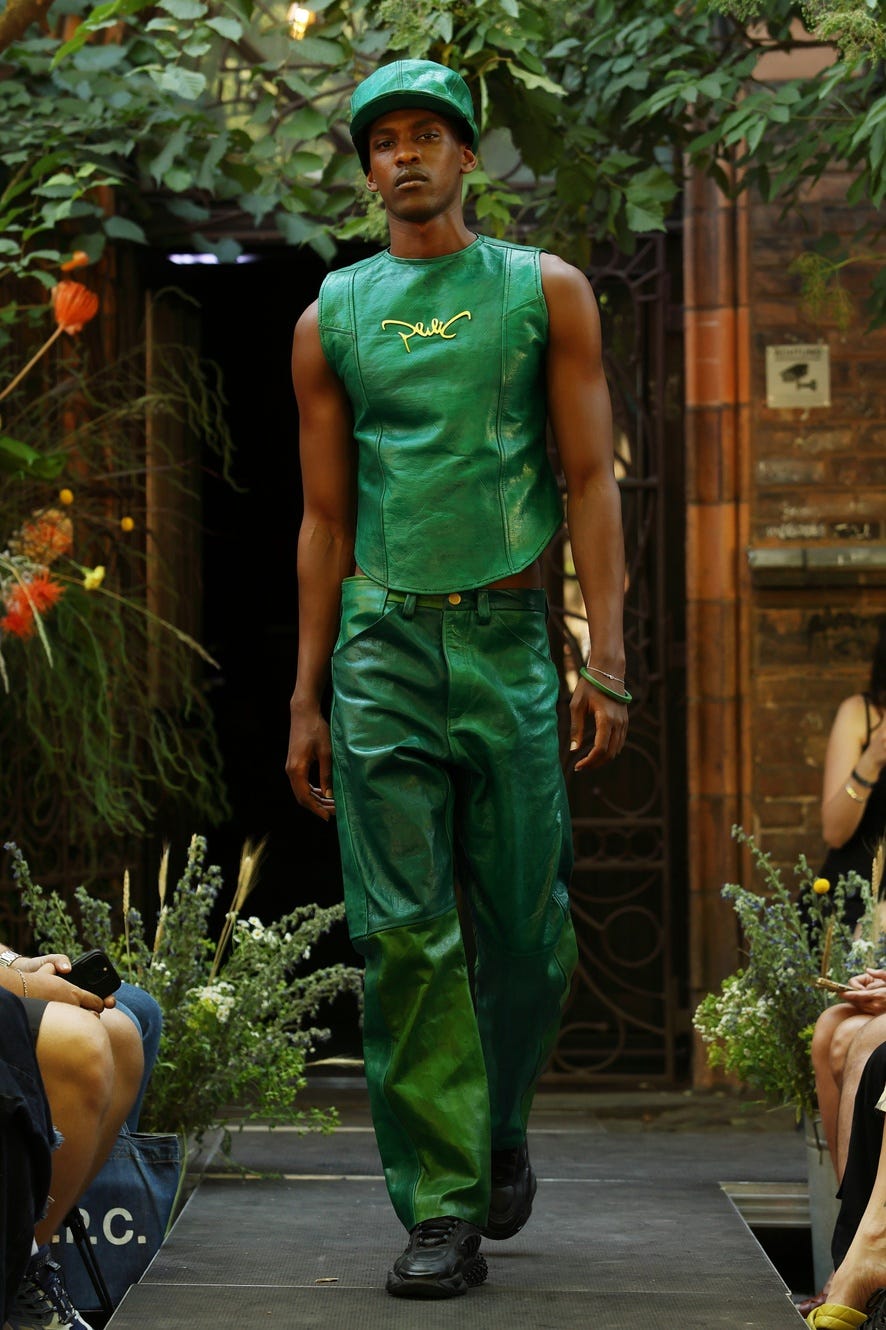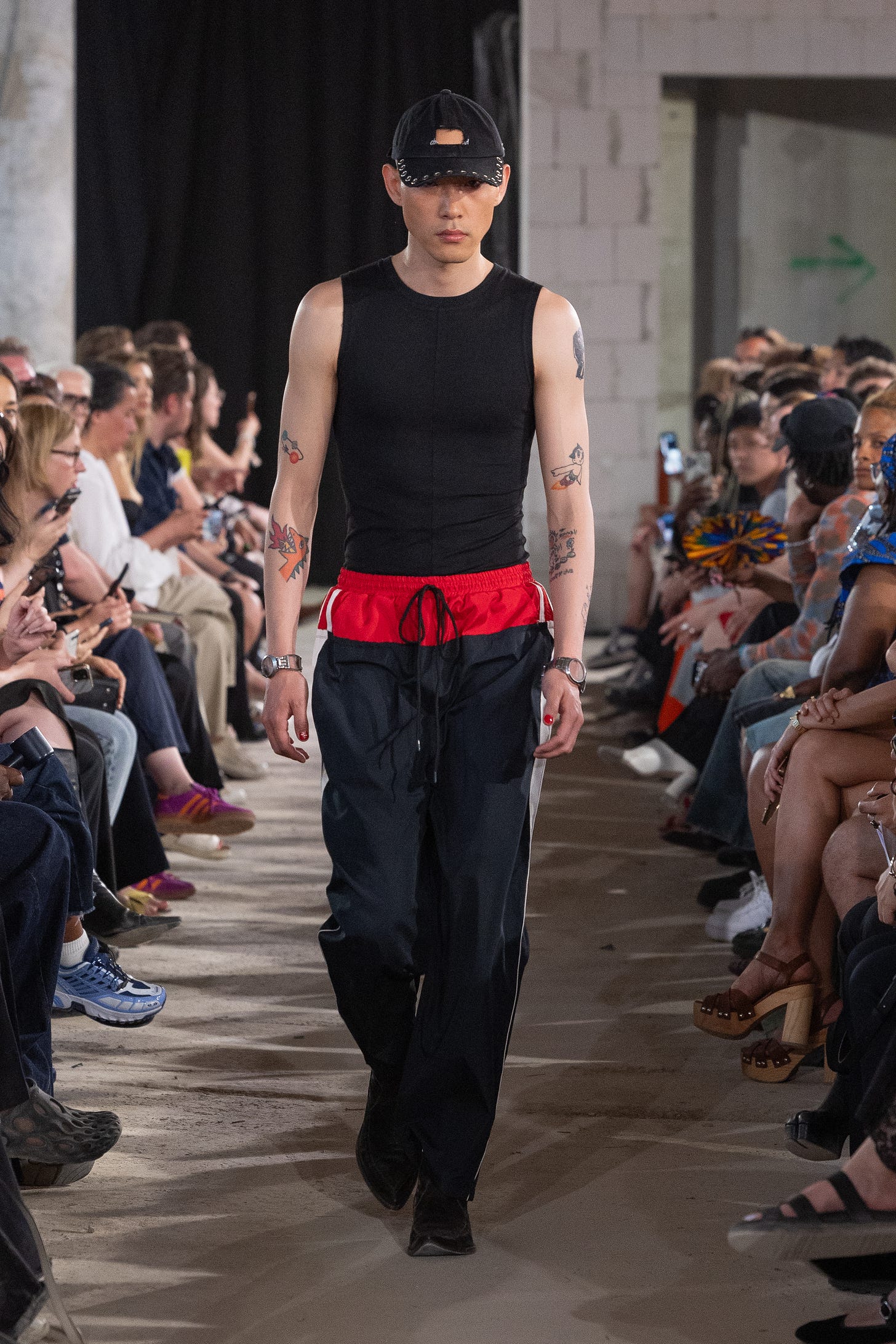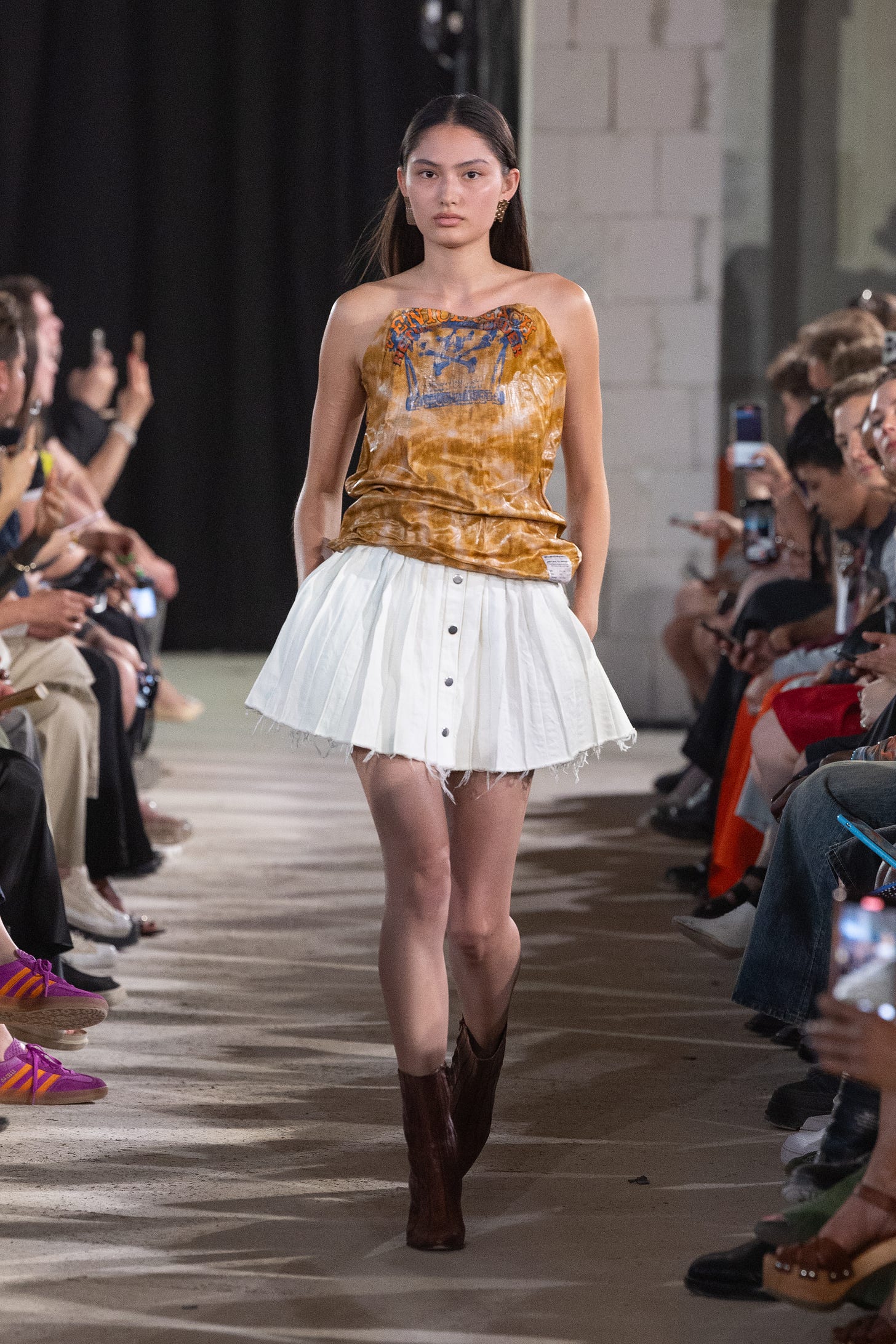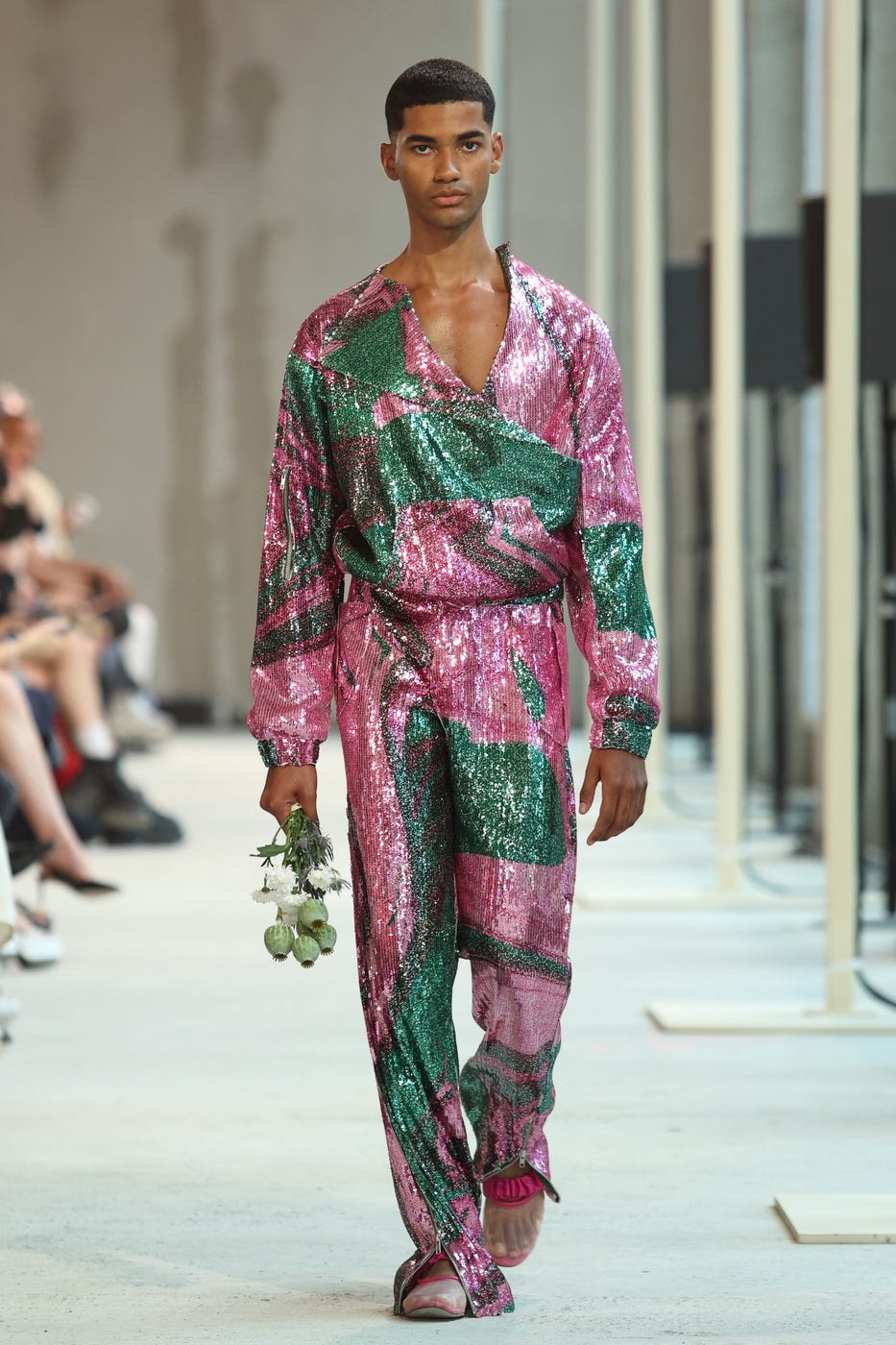On the Ground at Berlin Fashion Week
Nigeria’s Orange Culture, Ghana’s Palmwine Icecream and Uganda’s Buzigahill presented their Spring/Summer 26 collection at BFW. Here’s how they were able to do it.
Welcome back to Africa Reimagined! Today’s newsletter is a Berlin Fashion Week special, as the team kindly invited me to the German capital to see some of the African designers showcasing there, as well as gain a glimpse into Berlin’s buzzing fashion scene. It was my first time in the city, and I really liked it—more than I expected. It also helped having many friends and familiar faces in town. Thank you to Berlin Fashion Week and Fashion Council Germany for having me. (And hello to my German audience – I know a few of you are subscribed to AR.)
My schedule was packed with collection previews, fashion shows, interviews, pop-ups, parties, and dinners – your typical fashion week fare. While BFW is smaller in scale and considered an emerging event, it has a similar energy to major fashion weeks, with buzzy brands like GmbH, Ottolinger, and David Koma on the schedule, and industry leaders such as Edward Buchanan, Sara Sozzani Maino, and Susanna Lau in attendance. The closing of Berlin Fashion Week was marked by Ioannes, a minimalist Parisian brand founded by Johannes Boehl in 2019, followed by a lovely dinner with Orange Culture and the official BFW closing party. A time was had. Despite the trip being very short and full of shows, there was one thing we couldn’t leave Berlin without seeing: the Benin Bronzes. A very important part of history, and currently a big discussion in the art/museum world.
As I mentioned in a previous newsletter, I’m always fascinated to see designers from the continent travel far and wide to showcase their collections abroad. As Chris Akpo explained, it’s a significant financial expense but a strategic move to attract new consumers in Europe, especially as they look to expand the brand internationally. This sentiment is shared by many emerging designers. However, one question I keep asking myself is: ‘Is this sustainable or financially viable?’ The answer is more complex than we often think, and Berlin Fashion Week wants to help. They are investing millions in the week-long event, bringing fresh and emerging talent to the city. Among those names are three designers of particular interest to me (and possibly many of you): Nigeria’s Orange Culture, Ghana’s Palmwine Icecream, and Uganda’s Buzigahill. These designers each received €25,000 to showcase at BFW — a pretty sweet deal. Every season, designers submit an application, and a jury selects a handful of brands to receive the prize money.
Berlin Fashion Week wants to be recognised as a platform for supporting emerging and global talent, said Christiane Arp, former Editor-in-Chief of German Vogue and chairwoman of the Fashion Council Germany. That’s also reflected in their strategy. They want to be a hub for creative industries and a platform for global talent, uniting European and international designers. Besides the three featured designers, others were also in town, including LVMH Prize semi-finalist Boyedoe and Mowalola, who held a four-day pop-up.
Below, you can find my thoughts and brief comments on each of the African designers who showcased their collections.
Let’s dive in.
Palmwine Ice Cream – Spring/Summer 26
A Celebration of Women, Craft, and Nature
Having some of your items stuck in customs is possibly a designer’s worst nightmare. And that’s exactly what happened to Ghanaian designer Kusi Kubi, whose goods had been held by customs for over a week. Speaking to me ahead of the show, he was excited and nervous, unsure whether his pieces would be released in time for his runway show. They were not. But the show went on without anyone realising items were missing. Kubi is known for his prolific use of deadstock leather. Every piece is handmade in Ghana using upcycled and deadstock materials, with techniques that honour both tradition and innovation. This season, naturally dyed leather from northern Ghana plays a leading role, coloured with tree bark and sun-drying methods passed through generations.
I was first introduced to Kubi and his brand back in 2022 when he held Palmwine Icecream’s first-ever show in an abandoned, unfinished concrete building in Accra. It was edgy, sexy, and featured a lot of leather. That aligns with the Berlin fashion scene, he said. I wanted to show in London, but the opportunity just wasn’t there, and the support you get as a new designer is not the same… Berlin and my brand complement each other in a way,” Kubi said. SS26 felt very true to the Palmwine IceCream aesthetic, but this runway show marked a pivot into womenswear. The funding contributed to hiring models, flights for the team, accommodation, show space, etc.
Buzigahill – Spring/Summer 26
Return to Sending 11
Buzigahill is truly such a fascinating brand, one that’s challenging our idea of fashion and circularity. The Kampala-based brand has been building collections using textile waste sourced from the Owino market, Uganda’s largest secondhand market. This Berlin Fashion Week show marked its 11th collection produced entirely from waste, so if you spotted some reconstructed Adidas pieces on the runway, this is why. Some of the looks included a maxi dress made using panels from six different shirts, a fringed chainlink dress made from 18 white t-shirts knotted together, and a classic denim jacket dismantled and reassembled. There were many more interesting and innovative looks (38, to be exact), but I’ve often wondered what the limitations are. The main one appears to be limited design freedom, founder Bobby Kolade explained: “This is our 11th collection. Almost every single piece you see here has been something that we have been working on [and] improving over time,” Kolade said. “I don’t come up with crazy ideas. It’s all based on pieces that we already have, and we just want to develop further.” The majority of Buzigahill pieces are not one-of-a-kind; the team produce multiple pieces of the same look using 100 percent recycled materials.
The three-year-old brand is fairly new on my radar. Beyond production and its small shop in Kampala, the brand does not distribute to African countries. That’s intentional, Kolade said. “The return to sender conversation is with the Global North,” he said, including the diaspora community who participate in the fast fashion systems. He also noted that people in cities like Kampala or Accra who can afford these pieces, which have been sourced from the market, would rather purchase other brands. “They can’t reconcile the fact that these clothes have come from a market that they would never go to because they’re middle and upper class.”
Orange Culture – Spring/Summer 26
In the Shadows
On the final day, Orange Culture held its debut Berlin Fashion Week show, drawing in a full house of editors, buyers, and friends of the brand. From the music to the styling, this was a tender and delicate exploration of mental health. Speaking to founder and creative director Adebayo Oke-Lawal after the show, it was evident that he poured his heart and soul into this collection, following a very difficult time in his personal life. There was a mix of styles and techniques spotted on the runway, including a sequin jumpsuit and knitted off-the-shoulder dress, but my favourite was the beautifully tailored suits to pleated vest tops and trousers. I wanted the collection to reflect this idea that you’re heart will eventually tell the truth. People will see through the smoke and mirrors, the facade,” he explained. “We (Orange Culture) play more with details, fabrics and shapes. If you look at our clothes, you’ll find stories in the details, the colours, the prints, the styling, and the music.”
Showcasing at Berlin Fashion Week was “one of the best decisions I’ve ever made”, he said, adding that it was a reminder to keep going and pushing the brand into new places and spaces. “It was nice to see that they are open to all these different stories. It doesn’t have to be exactly what they know. They’re open to new experiences, new stories and new people. Berlin left me feeling happy and excited for the future.” He added that the positive reception and feedback to his brand could make BFW a regular destination for Orange Culture, as it highlights the opportunity to engage with a new European audience as well as tap into the city’s burgeoning fashion scene.
*sorry in advance for any typos!
Thank you for reading.
I’ll be back in your inbox on Wednesday!

